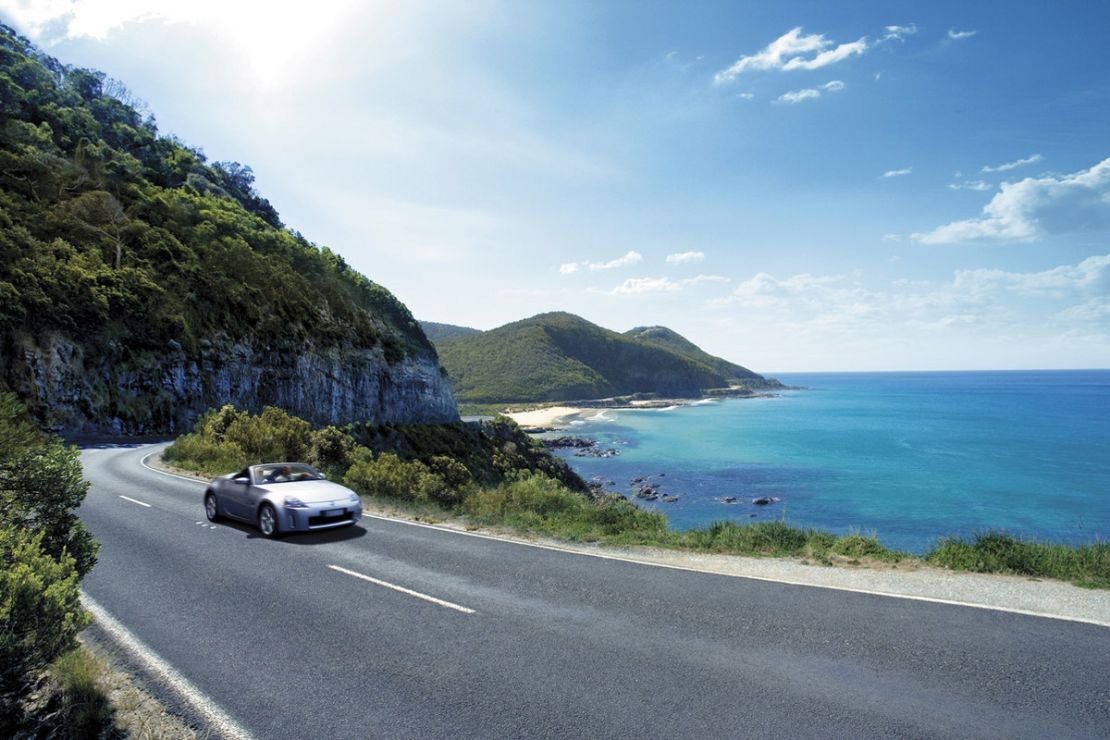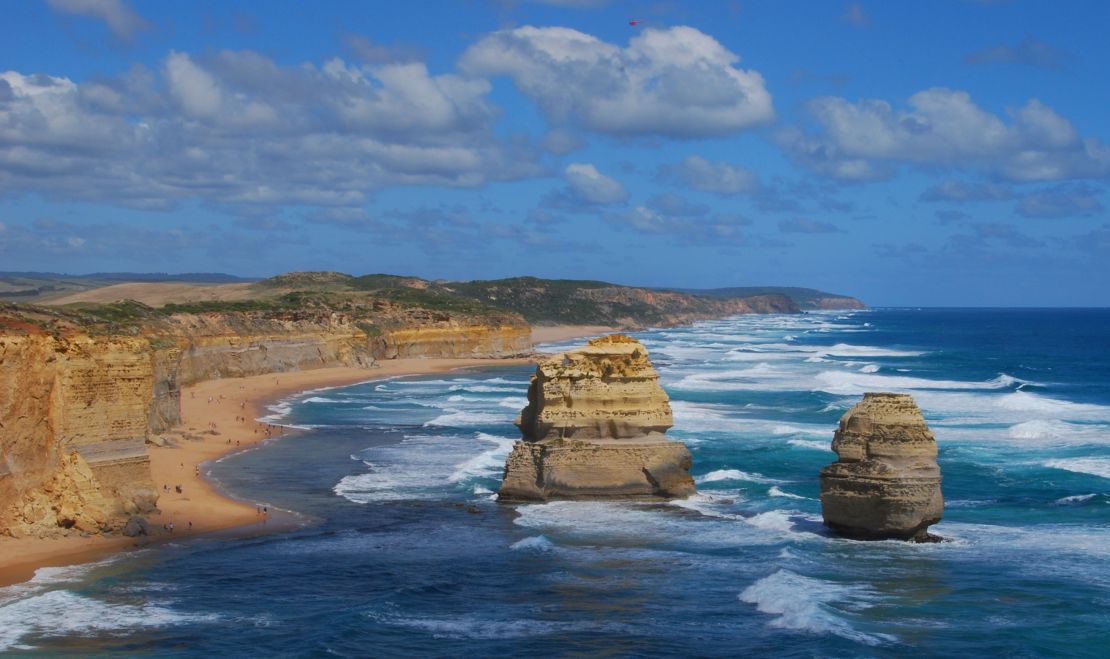Like the Pacific Coast Highway in California or the Sea-to-Sky Highway near Vancouver, the Great Ocean Road in Australia’s state of Victoria is one of the greatest drives on the planet.
Between Torquay and Warrnambool, the Great Ocean Road is becoming one of the most popular destinations in Australia, wooing 2 million visitors a year.
While much of the road offers stunning views, the main attraction is the 12 Apostles, a group of limestone formations that rise above the ocean. Wind and wave erosion have acted like a sculptor in gradually whittling the soft, limestone landscape into stacks, cliffs and arches. Today, the stacks stand up to 50 meters high.
This natural process of decay is still happening at a rate of about 2 centimeters per year.
Some explanation is required here. When they were christened the 12 Apostles by Victorian tourism in the 1920s, there were only nine in the cluster. Now there’s eight. And with the rapid rate of erosion, it is forecast that this number will reduce even further.
And there are actually many more spectacular limestone formations along the wild coastline. These are viewed from a road that, at times, literally rides atop cliff faces.
The Great Ocean Road

It’s not only the spectacular views of land meeting the Southern Ocean that make the Great Ocean Road wondrous.
The road is a masterpiece of human achievement, which has been called “Victoria’s largest war memorial.”
Between 1919 and 1932, more than 3,000 returned soldiers built the road to honor more than 60,000 Australians killed in World War I.
Sleeping in tents through violent storms, workers built the road by hand, using picks, shovels, wheel barrows and explosives.
Back then, its aim was primarily to link up isolated fishing villages and logging camps. Once fully complete, it wasn’t long before the road began to spur the local tourism industry.
The Great Ocean Road offers much of what many tourists want to see in Australia. Native wildlife such as koalas and colorful birds live in a raw habitat of lush foliage and dramatic cliffs. While I took in the 12 Apostles and a large chunk of the Great Ocean Road in a day trip, it is best to not be too hurried.
Scotland road trip: Is NC500 the best route ever?
Roadtripping to the 12 Apostles

My trip with Autopia Tours started with a 7:30 a.m. pick-up on Collins Street in central Melbourne.
In a bus full of young travelers, a mirthful Australian drove us to the famous surf breaks at Bells Beach just beyond Torquay for breakfast.
Then it was on to the narrow, twisting highway. Signs were warning foreigners to drive on the left, to watch out for falling rocks and not to drive off a cliff.
“Don’t fall over the edge,” quipped the driver, as we stopped at a vista. “I don’t like the paperwork.”
After a stop at Kennett River to see Australian wildlife – aforementioned koalas bears and a variety of birdlife – the highway then wound between the heritage town of Lorne and cultural Apollo Bay. By then, the journey into the giant trees and ferns of the Great Otway National Park had begun.
And it was in this stage of the trip where we took in the 12 Apostles and other highlights of Port Campbell National Park.
After motoring along cliff faces, hopefully travelers are accustomed to heights, as the boardwalk to view the 12 Apostles is just as hairy as the drive. It has astounding views of waves crashing into the jagged edges of the stacks below you.
I thoroughly recommend seeing them before they all collapse. Even so, many geologists believe nature is in the process of carving new stacks for future visitors.
There are other spellbinding formations nearby. The London Arch formation has recently had a name change. It used to be the London Bridge, until a section collapsed unexpectedly in January 1990.
There’s a lot to take in during a day and many drive slowly – extending their trip to take in what is offer along the entire Great Ocean Road, spending nights at pubs, campsites, hotels and charming bed and breakfasts along the way.
Or if the drive is too fast, the Great Ocean Walk that opened in 2004 connects 104 kilometers of trails along the coast between Apollo Bay and the 12 Apostles.
Editor’s note: This article was previously published in 2011. It was reformatted, updated and republished in 2017.



